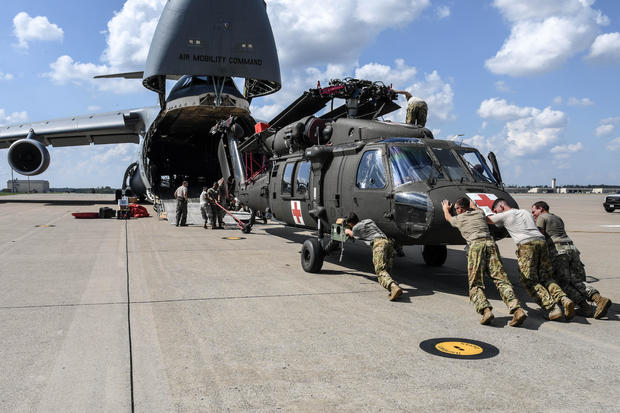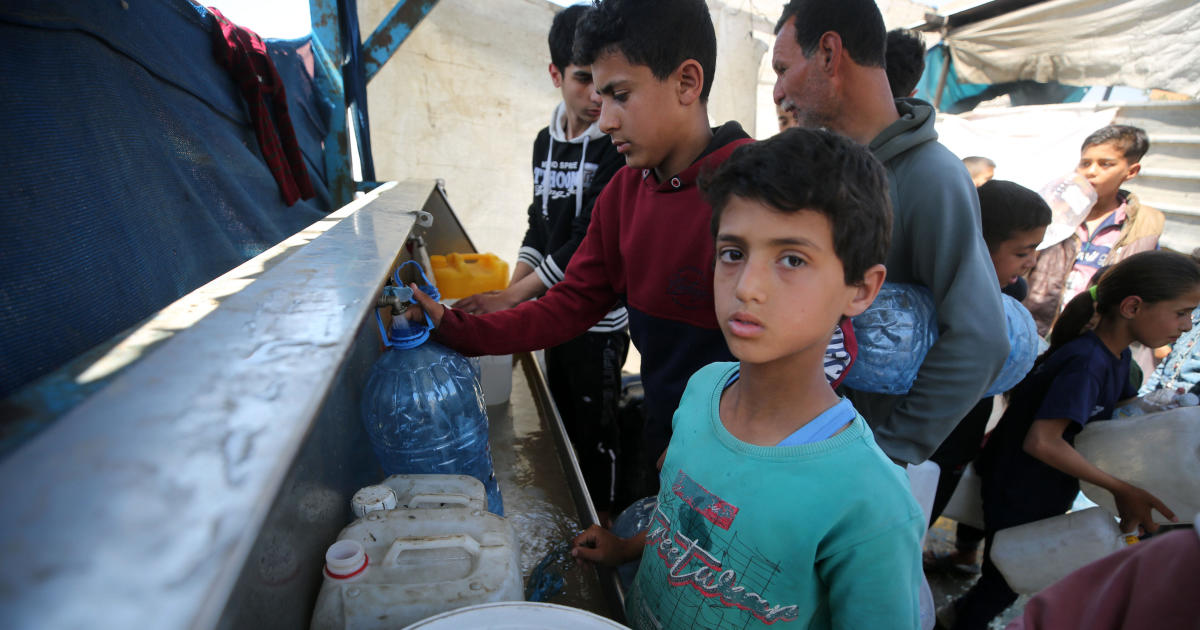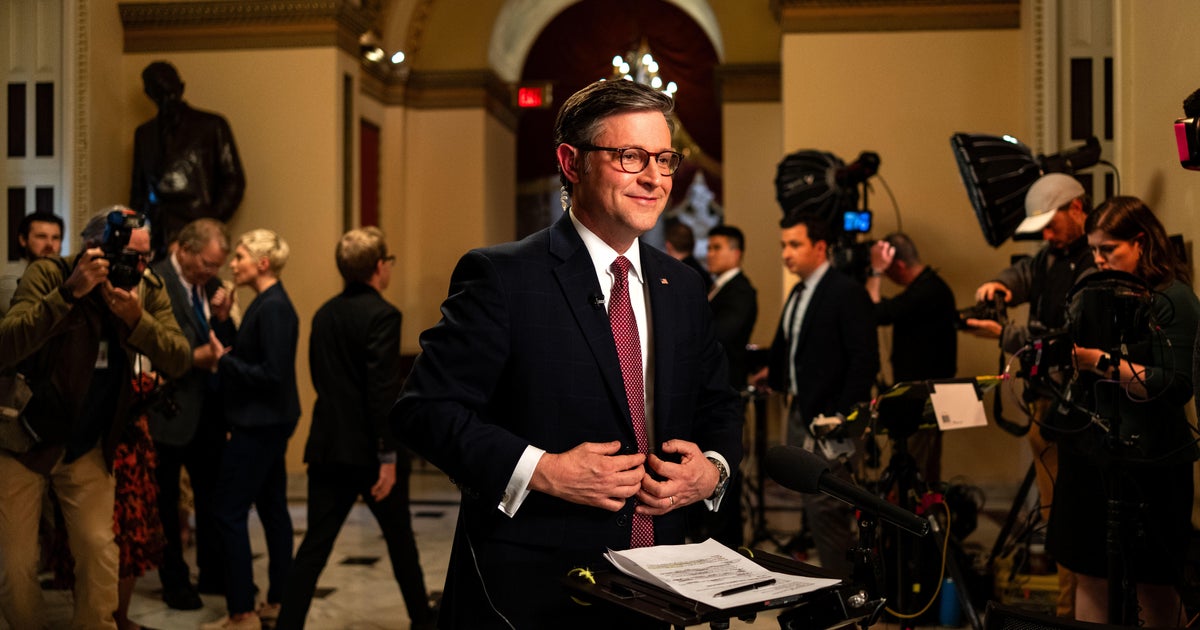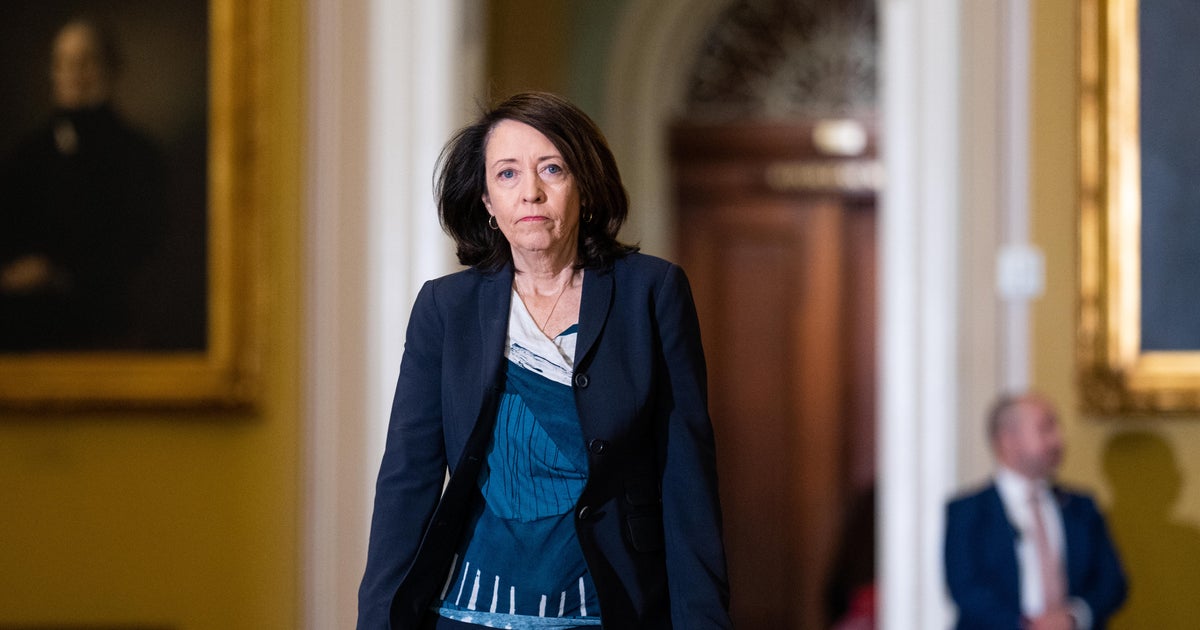101st Airborne Division deploying to Puerto Rico as recovery effort lags
SAN JUAN, Puerto Rico -- The U.S. Army's elite 101st Airborne Division is deploying eight medevac helicopters and support personnel to Puerto Rico to assist in the recovery from Hurricane Maria as many residents remain without power and basic necessities six days after the storm.
More than 70 service members left for the island on Wednesday, a spokesman for the 101st told CBS News. The effort is the first time the 75-year-old unit has been deployed to assist in hurricane relief.
The 101st joins thousands of military personnel being sent to assist in distributing aid to the island, where 3.4 million people lack power.
Many residents are waiting for help from anyone from the federal or Puerto Rican government. But the scope of the devastation is so broad, and the relief effort so concentrated in San Juan, that many people from outside the capital say they have received little to no help.
Only 21 of the 69 hospitals on the island have power or fuel, CBS News correspondent David Begnaud reports.
San Juan Mayor Carmen Yulín Cruz is frustrated with what she says is a slow response from the Federal Emergency Management Agency (FEMA).
"They're waiting for their marching orders now. You're in an emergency. If you don't do -- hundreds of lives will be lost," she told Begnaud.
There are several thousand U.S. federal employees in Puerto Rico helping with the recovery effort. They are most visible in San Juan, where officials with FEMA, Homeland Security, Customs and Border Protection have a presence at hotels that before the storm served tourists in the Condado neighborhood or at the convention center that has become a staging ground for relief efforts.
Federal workers supplied diesel to generators at hospitals and delivered desperately needed food and water to hard-hit communities across the island. They have repaired the air traffic control systems and power at the airport, which is far from normal operations with only about a dozen commercial flights per day. U.S. agents have also provided security across the island and the Coast Guard has worked with local authorities to restore the sea ports, a vital link because Puerto Rico is almost completely dependent on imports.
In addition, teams from the Army Corps of Engineers are helping to repair the electricity grid and to inspect and look for ways to avert the collapse of a dam near the western town of Quebradillas that has developed a crack and that officials have said could potentially fail. And personnel from Health and Human Services, the Department of Defense and Veterans Affairs have provided care and helped evacuate people from Puerto Rico with chronic medical conditions.
Teams also were scheduled to visit the central mountain town of Aibonito, which was cut off from the rest of the island for five days. Many people began rationing their food and water supplies as they dwindled, unclear of when they would have contact with the outside world.
"We thought somebody was going to stop by," said Ana Lidia Mendoza, a 48-year-old cook at a barbecue restaurant who lost part of her roof. "They told us that we had to stay calm."
Gov. Ricardo Rossello and Resident Commissioner Jennifer Gonzalez, the island's representative in Congress, have said they intend to seek more than a billion dollars in federal assistance and they have praised the response to the disaster by President Donald Trump, who plans to visit Puerto Rico next week, as well as FEMA Administrator Brock Long.
"I am confident that they understand the seriousness of the situation," the governor said Tuesday.
Still, it is hard to avoid the fact that the response looks different than previous ones. After hurricanes in Louisiana, Texas and Florida, waves of power company trucks from other states descended in long convoys, something that is obviously not possible on an island 1,000 miles to the southeast of the mainland. After the devastating earthquake in Haiti in January 2010, the U.S. military sent ships and the skies seemed to be filled with heavy-lift helicopters and planes carrying emergency relief, though the scale of that disaster was far worse.
Hurricane Maria was the strongest hurricane to hit Puerto Rico in nearly 100 years and officials say the cost of recovery will dwarf that of the punishing Hurricane Georges in 1998. Whatever the final bill, Valentin just hopes it will factor in people like her. "If FEMA helps us, we are going to build again," she said.




